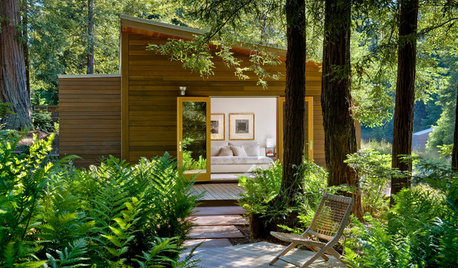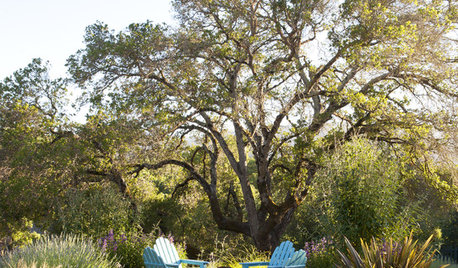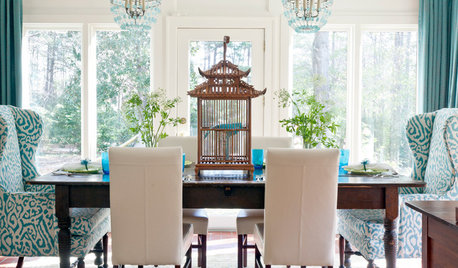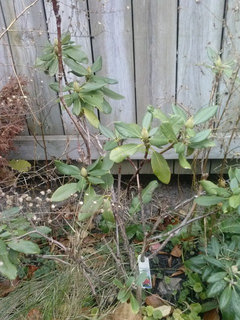Rhododendrons under fruit trees?
simplepie
7 years ago
Featured Answer
Sort by:Oldest
Comments (19)
akamainegrower
7 years agosimplepie
7 years agoRelated Discussions
Bayer under fruit tree
Comments (0)Every year it is the same. I spray and fert and spray again. But every year I have trouble with Thrips when the satsuma plum tree comes into bloom. (none of my other trees seemed bothered) It scars the fruit pretty bad and I can't spray then because of the bees. Can I use Bayer advanced granules for thrips, under the tree. I do use it on the ground under my roses. Will it hurt anything, fruit or the tree? Thanks...See MorePine bark under fruit trees?
Comments (2)I understand that trees don't mind a bit more acidity than herbaceous plants & veggies - & it shouldn't be to difficult to check on that. What kinds of fruit trees are they? The important rule is not to pile mulch (&/or soil) up against the trunk of any tree, as this can lead to disease....See MoreArtificial Outdoor Grass as Mulch Under Fruit Trees?
Comments (1)I have used it between rows in the vegetable garden. It worked pretty much as you have conjectured except in the vegetable garden it tended to get mud on top of it from weeding and the like....See MoreWhat to plant under fruit trees
Comments (2)Jessaka, I grow very little under my fruit trees because anything underneath them is just going to compete with the tree roots. So, my preference is to have nothing but a shredded bark mulch. As it breaks down, it essentially turns into compost so it feeds the trees too, gradually and over time, and I like that. IF I had a problem with borers, and I haven't so far, I'd plant a ring of garlic around the tree a foot or so out from the trunk because garlic is reputed to repel borers. Some people plant nasturtiums under fruit trees because they attract beneficial insects that target harmful insects coming to the tree. The first and second years after we planted our fruit trees, I did have garlic and nasturtiums underneath them. In the fall, I shred leaves and pile them on the ground under the trees--right on top of the bark mulch. Then, in the spring, if the mulch has decomposed down, I add a couple of inches a bark mulch....and replenish it whenever needed. If you really, really want to grow something underneath, you could try one of the clovers....I like red clover because it is pretty when it blooms. Clover fixes nitrogen in the soil so it could help improve the soil and it does tolerate foot traffic. Down here in southern Oklahoma, it blooms in late spring, though, and then it dries up and goes dormant or semi-dormant. Of course, I have it in pastures and taller pasture grasses overtake it anyway, but by then it has bloomed. Some herbs might work as well since some of them can take a lot of foot traffic, but I'd still be a little concerned they'd compete with the tree roots for nutrition and water. Scott may be able to advise you better than I can since he has nut trees. Peaceful Valley Farm Supply, which I think is based in California, sells a dryland cover crop mix that it recommends for orchards. You might be able to find something similar locally so you wouldn't have to pay shipping costs. Peaceful Valley has tons of cover crops, some sold singly and some sold in mixes. You can learn a lot about cover crops just by reading their catalog. I am sure that farm stores or feed and seed stores sell similar stuff here, if you have any of them near you. Dawn Here is a link that might be useful: Dryland Cover Crop Mix...See Moresimplepie
7 years agolast modified: 7 years agoakamainegrower
7 years agogardengal48 (PNW Z8/9)
7 years agoNHBabs z4b-5a NH
7 years agofloral_uk z.8/9 SW UK
7 years agoHeruga (7a Northern NJ)
7 years agoNHBabs z4b-5a NH
7 years agoMike McGarvey
7 years agosimplepie
7 years agosimplepie
7 years agoakamainegrower
7 years agosimplepie
7 years agolast modified: 7 years agoMike McGarvey
7 years agoNHBabs z4b-5a NH
7 years agoEmbothrium
7 years agoakamainegrower
7 years ago
Related Stories

EDIBLE GARDENSHow to Grow 10 Favorite Fruit Trees at Home
Plant a mini orchard in fall, winter or early spring to enjoy fresh-off-the-tree fruit the following year
Full Story
FARM YOUR YARDIf You Have Room for Only One Fruit Tree ...
Juice up a small garden with one of these easier-care or worth-the-effort fruit trees for a mild climate
Full Story
GARDENING AND LANDSCAPINGCrazy for Fruit Trees
Whether a single citrus or a mini apple orchard, even the smallest landscape space can bear deliriously delicious fruit
Full Story
EDIBLE GARDENSGrow Plum Hybrids for Your Favorite Fruit Flavors
Plums are cozying up with apricots, peaches and even cherries — here’s how to grow these hybrids for the best aspects of each
Full Story
GARDENING GUIDESGreat Design Plant: Grow Blueberries for Their Fruit and More
Eastern gardeners should consider growing blueberry plants for their delicious fruits, bee-friendly spring blooms and brilliant fall foliage
Full Story
GARDENING GUIDESPrunus Virginiana Thrives Under Deciduous Trees
Plant chokecherry for showy white flowers favored by native bees in spring, and to provide nesting habitat and food for birds
Full Story
GARDENING GUIDESWhat to Plant Under Native Redwood Trees
Find out which ground covers, ferns, perennials and shrubs will thrive under the canopies of these West Coast giants
Full Story
GARDENING GUIDESWhat to Plant Under Western Native Oak Trees
Keep your tree healthy by underplanting with ground covers, grasses, perennials and shrubs that thrive in dry summer conditions
Full Story
MOST POPULARHow to Get Rid of Those Pesky Summer Fruit Flies
Learn what fruit flies are, how to prevent them and how to get rid of them in your home
Full Story
ENTERTAININGEye-Catching Centerpieces Beyond Flowers and Fruit
Use your imagination to create a tableau that reflects your surroundings, creates dramatic tension or elicits surprise
Full StorySponsored





gardengal48 (PNW Z8/9)